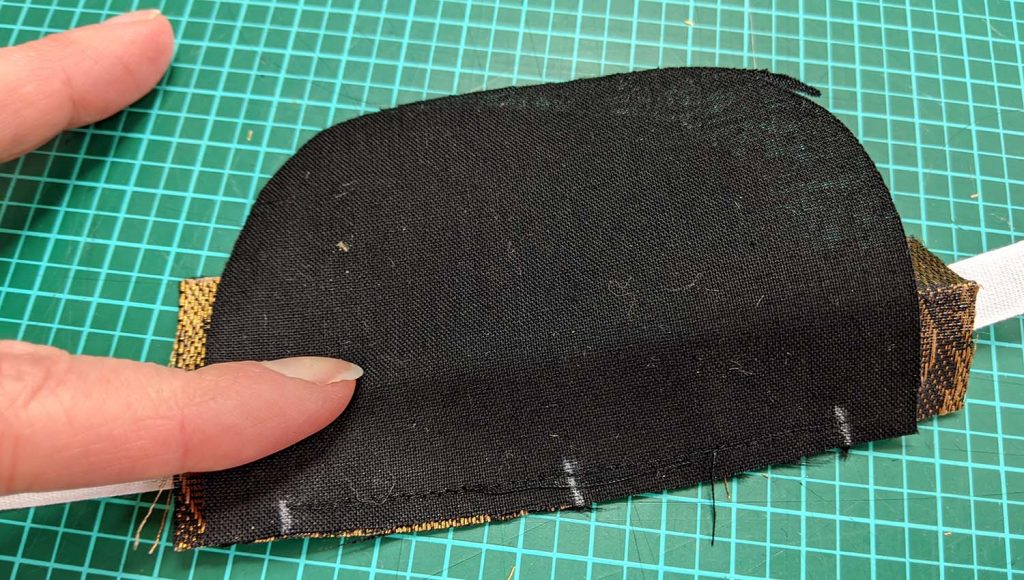Quilted petticoats where worn from the middle of the last century until the end of the 19th century, warming the body and shaping the overskirts at the same time. A quilted petticoat is a very simple garment, made of a double layer of rectangle pieces of fabric, padded with wool or cotton, commonly attached to a boned hip yoke to avoid bulk around the belly during the romantic period. I´m not a passionate quilter, that´s why I kept the quilting pattern of my petticoat simple, just a diamond pattern. On extant petticoats, you can see quilting patterns ranging from just parallel lines to fancy and complex designs.
I decided to use different colors of a polished cotton for the top and lining layer and sew them together along the bottom edge. It would have been easier not to do so, as the fabric warped in all directions I didn´t want. On this picture, I basted my batting to the lining layer and sewed the two pieces of padding needed together edge by edge with some rough stitches.

I smoothed out the top layer on top of the fabric and traced my quilting design, before I basted together all layers before quilting the petticoat.
Continue reading







